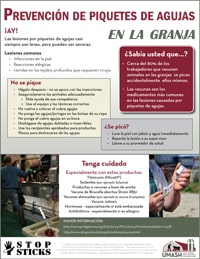
Cerca del 80% de los trabajadores que vacunan animales en las granjas se pican accidentalmente ellos mismos. Las vacunas son los medicamentos más comunes en las lesiones causadas por piquetes de agujas. This fact sheet was developed by UMASH as part of the Multidisciplinary Network to Address Agriculture Worker Health and Safety Issues project. OPEN …
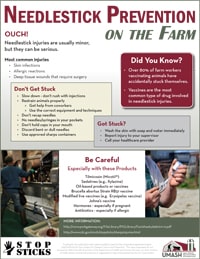
Over 80% of farm workers vaccinating animals have accidentally stuck themselves. Vaccines are the most common type of drug involved in needlestick injuries. This fact sheet contains tips for needlestick prevention for farm workers, and what to do if you get stuck. This fact sheet was developed by UMASH as part of the Multidisciplinary Network …
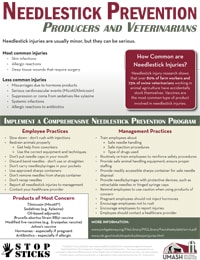
Needlestick injury research shows that over 80% of farm workers and 73% of swine veterinarians working in animal agriculture have accidentally stuck themselves. Vaccines are the most common type of product involved in needlestick injuries. This fact sheet contains tips for employees and management for implementing a comprehensive needlestick prevention …
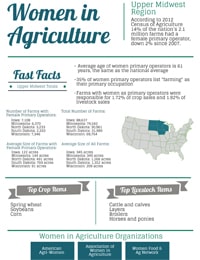
Fact sheet developed by UMASH as part of the Multidisciplinary Network to Address Agriculture Worker Health and Safety Issues project. The fact sheet uses data from the 2012 Census of Agriculture and contains facts on the prevalence of women in agriculture in the Upper Midwest region. OPEN PDF
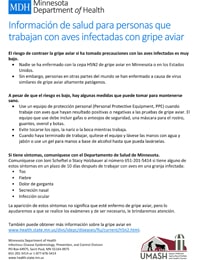
El riesgo de contraer la gripe aviar si ha tomado precauciones con las aves infectadas es muy bajo. A pesar de que el riesgo es bajo, hay algunas medidas que puede tomar para mantenerse sano. OPEN PDF
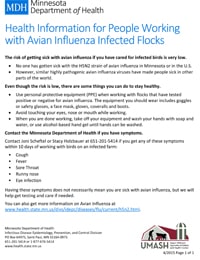
Fact sheet developed by the Minnesota Department of Health with information for avian influenza infected flocks. The risk of getting sick with avian influenza if you have cared for infected birds is very low. Even though the risk is low, there are some things you can do to stay healthy. OPEN PDF
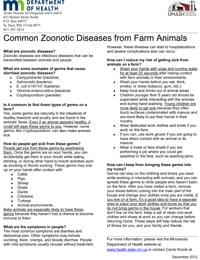
This fact sheet developed by the Minnesota Department of Health contains information about zoonotic diseases and tips for preventing illness. – What are zoonotic diseases? – What are some examples of germs that cause diarrheal zoonotic diseases? – Is it common to find these types of germs on a farm? – How do people get sick from these germs? …
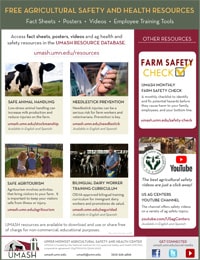
A pdf list of fact sheets, videos and other agricultural health and safety resources developed by UMASH, research and pilot projects, and UMASH partner organizations. OPEN PDF

Petting zoos and fairs fact sheet developed by the Minnesota Department of Health. – Are petting zoos and fairs safe? – What are zoonotic diseases? – What are some examples of germs that cause diarrheal zoonotic diseases? – Is it common to find these types of germs at a petting zoo or fair? – How do people get sick from …
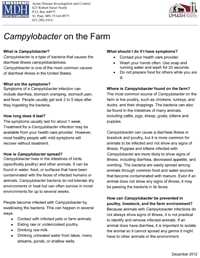
Campylobacter fact sheet developed by the Minnesota Department of Health. – What is Campylobacter? – What are the symptoms? – How long does it last? – How is Campylobacter spread? – What should I do if I have symptoms? – Where is Campylobacter found on the farm? – How can Campylobacter be prevented in poultry, …










